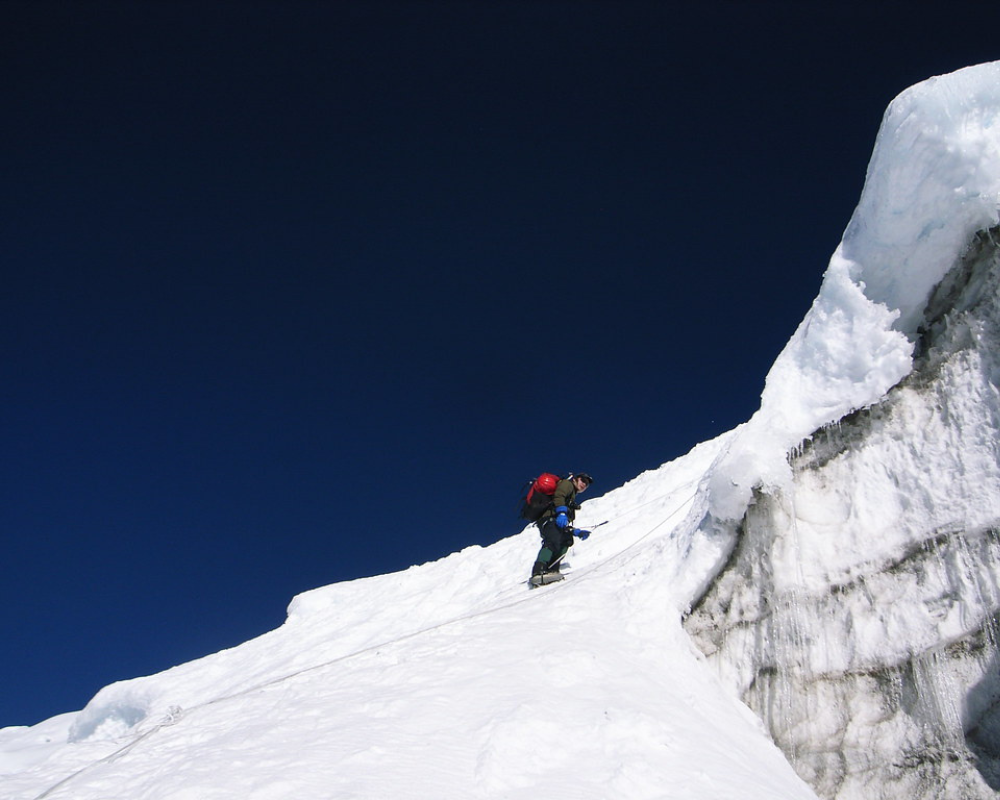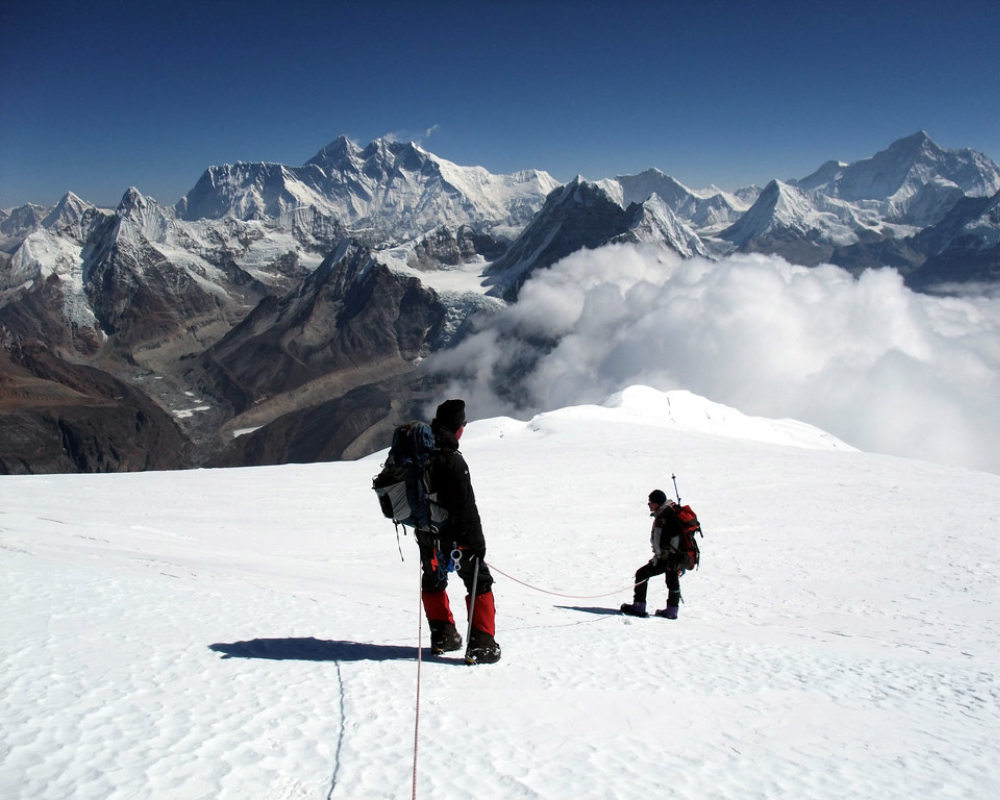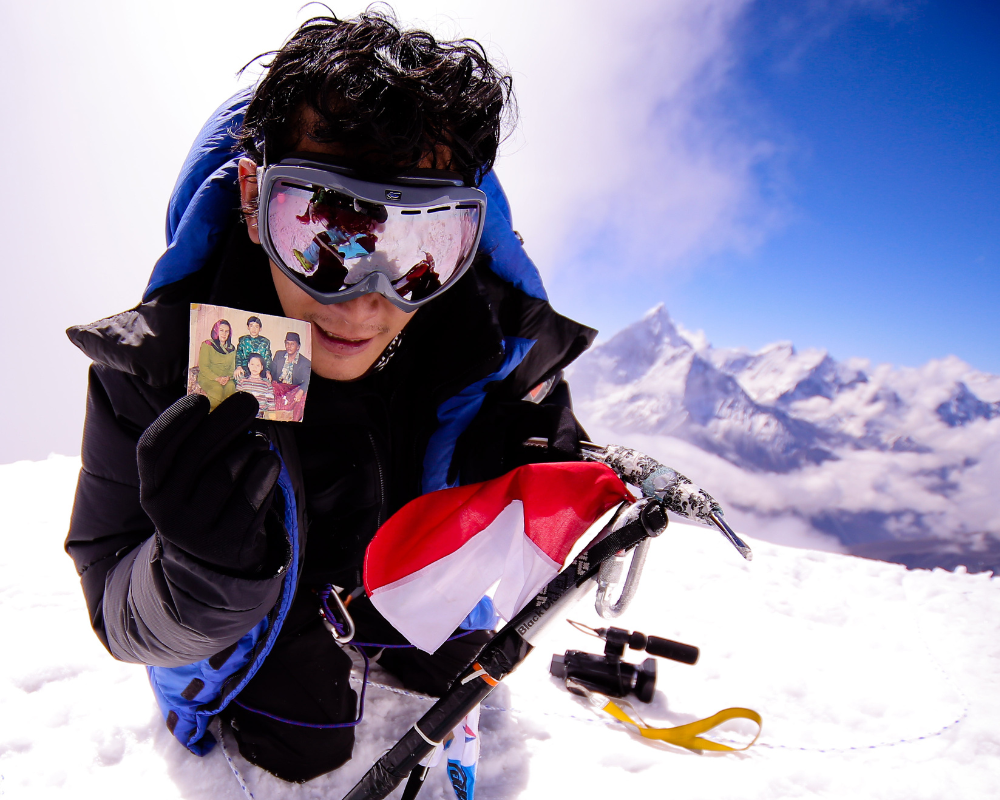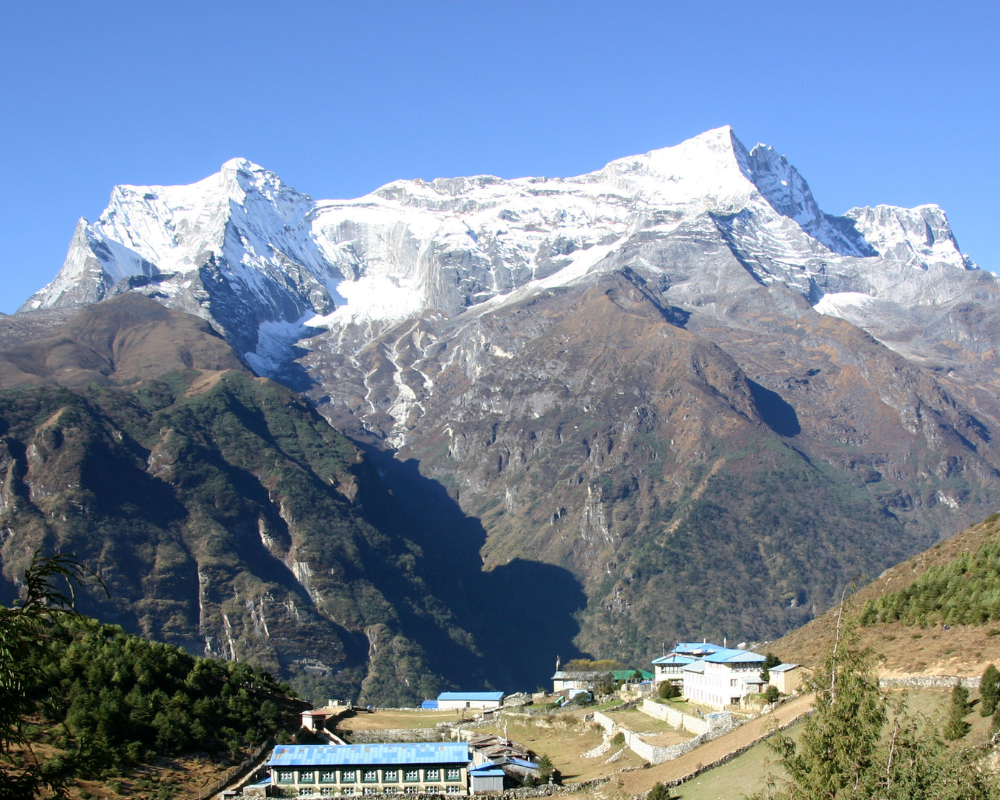It’s no secret that Nepal, especially the Khumbu region is filled with beautiful mountain peaks. The Everest region is a haven for adventure seekers all across the world, ranging from hiking and trekking trips to expeditions of 8000-ers. All across northern Nepal, along the Upper Himalayan range, there are 8 of the 10 highest mountains in the world, scaled only by the most elite alpine climbers. Fortunately, there are a lot of snow-capped peaks that are considered beginner-friendly. If you are a seasoned trekker and looking for a challenge a little more difficult than standard trekking journeys, peak climbing is for you.
It is crucial to remember, however, that climbing any mountain, regardless of difficulty, necessitates adequate training, equipment, and planning. Climbing in the Everest region may also be physically and mentally challenging, so new climbers should be aware of the hazards and be in good physical and mental condition.
Here are some of the peaks beginners can climb in the Everest region.
For beginners even during the hike, one can Climb the peaks like Chhukung Ri and Gokyo Ri during the Three High Passes Hike.
Island Peak

Island Peak, also known locally as Imja Tse, is one of the famous climbing peaks for beginner mountaineers. Its summit lies at an altitude of 6189 meters. It is an extension of a ridge Mount Lhotse, that runs down south from the Lhotse Shar peak. It was named Island Peak by members of the 1953 Everest expedition because the peak looks like an island as seen from Dingboche.
Like all trekking routes in the Everest region, the journey to the summit of Island Peak starts with a flight to Lukla. You will follow the main route to Everest base camp until Dingboche from where you head towards the village of Chukhung. As an acclimatization, most people hike to Chukhung Ri (5546 meters), while some people decide to do Island Peak climbing after they return from Everest Base Camp.
From Chukhung, you hike to Pareshaya Gyab (Island Peak Base Camp) at an altitude of 5087 meters. You can stay at base camp or at high camp at 5,600 meters. On the summit day, you start at 2 AM so that you can reach the summit before noon in order to avoid high winds. You will return to the village of Chukhung for an overnight stay before making your way back. You also have the option of returning via helicopter from the base camp. However, reaching the base camp via helicopter is not recommended as your body needs to acclimatize to the altitude.
Mera Peak

Mera Peak is one of the highest peaks that fall under the category of “trekking peaks.” It has three distinct summits, namely Mera North (6476 meters), Mera Central (6461 meters), and Mera South (6065 meters). It’s one of the highly sought-after peak climbing treks in the Everest region. Even though the tour starts from Lukla, the route is completely different from most treks in the Everest region.
You start your trek following a trail that moves southeast from Lukla. You will need a permit to enter some villages on this trail. You will pass via rhododendron forests below the Kalo Himal ridge to reach the village of Chutang. The next day, you will head to Tuli Kharka, passing through the Zatrawala pass. From Tuli Kharka, you will go through Hinku valley enjoying the views of the Mera Peak, and stay overnight at Kothe. The trek the next day takes you to Thaknak, a temporary settlement, where you take another day to acclimatize. From Thaknak, you will walk along Dig glacier to reach Khare and climb over Mera glacier to reach Mera Base Camp.
From the base camp, you cross the glacier to reach High Camp, your accommodation before the day of the summit. On the summit day, you will start the ascent at 2-3 AM so that we reach the summit before noon. From the top, you will see Mount Everest, Cho-Oyu, Makalu, Lhotse, Kanchenjunga, and more.
Lobuche East Peak

Lobuche Peaks are mountains peak that lies close to Khumbu glacier and the Everest base camp. There are two peaks, Lobuche East (6,199 meters) and Lobuche West (6,145 meters). Lobuche East is a trekking peak, however, Lobuche West, is an expedition peak.
The trip to the peak of Lobuche East is normally an extension to the standard Everest base camp trek. The completion of the trek is also beneficial for the acclimatization of the climb. The climb to Lobuche East starts from the settlement of Lobuche. From Lobuche, you trek to Lobuche base camp (4865 meters) along the Lobuche glacier where you get ready for the climb. The next day, you trek to High camp at 5600 meters where you spend the night. On the summit day, you start a little after midnight to avoid high winds in the summit that will accompany the afternoon. From the top, you will see Everest, Ama Dablma, Lhotse, Nuptse, and many other peaks.
Kwangde Peak

Kwangde Peak is a challenging trekking peak in the Khumbu region with an altitude of 6,086 meters. It is a part of the Rolwaling Himal and is situated southwest of Namche Bazaar. There are two routes to reach the Kwangde base camp, one via Thame village and the other via Lumding Kharka.
The trail via Thame forks from Namche Bazaar on the fourth day of the trek. From the legendary Sherpa village of Thame, you will reach Kwange base camp in a day. In the alternate case, you will trek to Lumding Kharka on the second day of the trek. From Lumding Kharka, you will trek to Pokhari Camp on day three and to Kwange Base Camp the next day.
From the base camp, you will trek to the high camp where you will stay overnight. On your ascent day, you will start a couple of hours after midnight in order to reach the summit before the high winds of the afternoon. You will return to base camp for an overnight stay.




